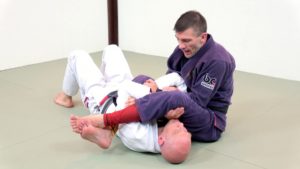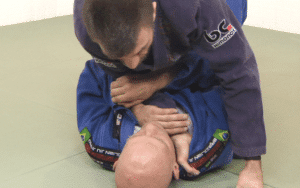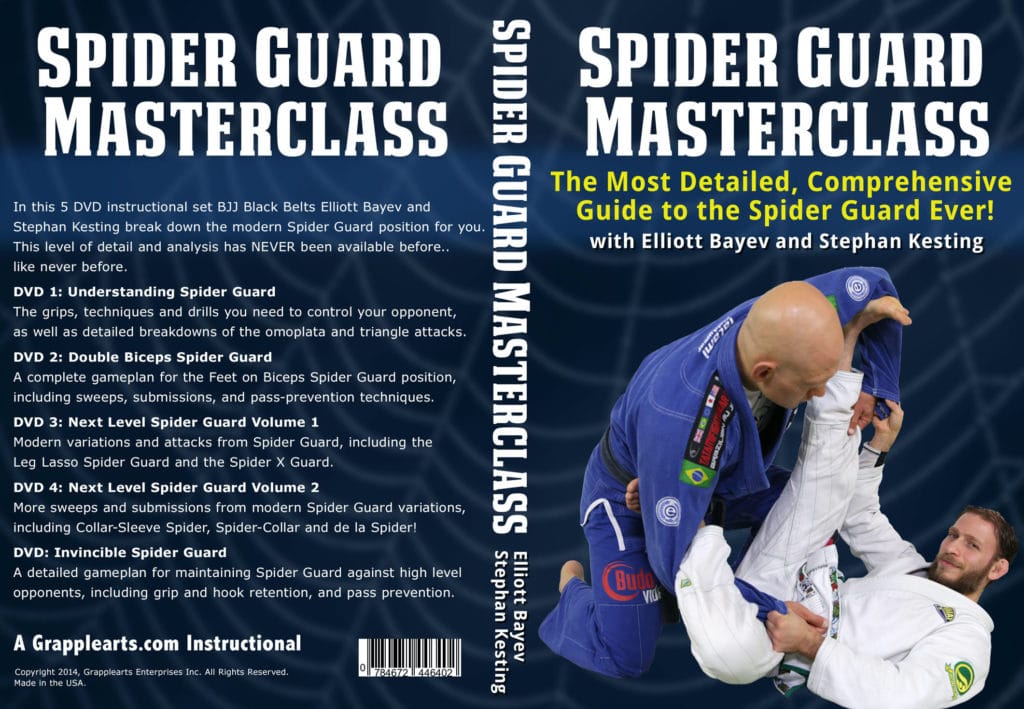Modern BJJ is unimaginable without the Spider Guard.
In this form of Open Guard you grip your opponent’s wrists or sleeves and have at least one foot controlling at least one of his arms. Usually your feet will be placed against his biceps, and/or one leg will spiral around his elbow with your toes hiding underneath his upper arm (this is called a ‘lasso’).
Controlling both of his arms essentially gives you two giant levers with which you can manipulate his whole body, while also limiting his ability to get his paws onto you. This sets you up to attack with a TON of sweeps and submissions.
And out of all those attacks the Kite Sweep is probably the first sweep you should learn from Spider Guard.
The Kite Sweep from Spider Guard – Video Format
Here’s my friend Elliott Bayev showing you exactly how to do the kite sweep from the double foot on biceps Spider Guard!
Check it out…
The step by step breakdown of this same sweep is illustrated in pictures below…
The Kite Sweep from Spider Guard – Step by Step
STEP 1, Start in Spider Guard
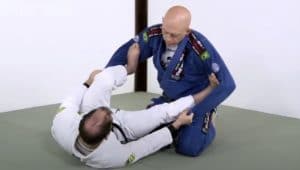
1: Start in Spider Guard
Start in the spider guard, offbalancing your opponent to keep him on the defensive (click here for a series of spider guard drills to help you learn how to move in this position).
Note that one of your legs (in this case the left leg) is higher and bent, and the the other leg (the right) is almost straight and lower to the ground. This helps create the tension on his upper body which makes it harder for him to move and sets up your subsequent attack.
STEP 2, Break the Grip on the Bottom Leg
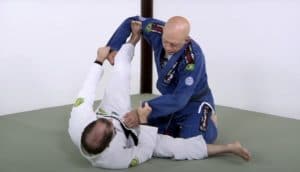
2: Break Grip on Leg
The next step is to free one of your legs, preferably the bottom one.
When someone is caught in the Spider Guard they’ll almost always try to countergrip your pant legs. This pant grip isn’t the end of the world, but to do this sweep you’ll need one of your legs free of to move
To break this grip you’re going to simultaneously do two things…
- Sharply kick your right leg past his body; you’re NOT trying to push him away, just kick your leg into space beside his hip
- Pull his sleeve towards you using your own grip
This push-pull grip motion is central to almost all grip breaks in jiu-jitsu, so it’s something you need to become comfortable with.
Once your leg is free keep it straight and drop it down to the floor to the outside of his knee. This is going to block him from adjusting his leg during the next steps.
Now swiftly move on to step 3…
STEP 3, Kick Top Leg to the Side
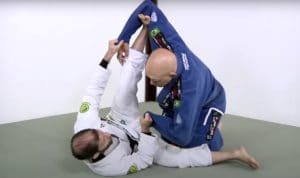
3: Kick Top Leg to the Side
Now you’re going to use your top leg to kick him over your bottom leg (the one that’s blocking his knee).
This movement is a little bit like a one-legged leg press combined with a crescent kick; you want to tilt him to the side.
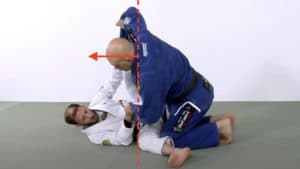
Side View: Head Crosses the Knee Line
The critical moment to watch for is when his his head comes past your leg line. THIS is when he’ll feel magnetically compelled to put his hand on the floor, and this is when you need to move to step 4 immediately!
STEP 4, Deny Him Base by Pulling Arm
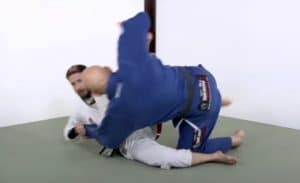
4, Pull Sleeve Back
As he starts falling he’ll almost certainly try to stay on top by posting his hand or elbow on the mat. Therefore it’s important to yank his posting arm away before it touches down.
You don’t want to use arm strength here, because there’s a MUCH more effective way to pull his arm out of position.
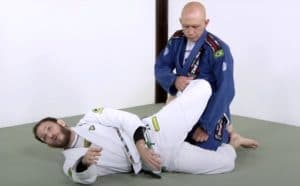
Body Mechanics of the Pulling Motion
Instead of pulling with your arm you want to just maintain the grip you had before but extend your body backward while pushing your hips forward. Much like the bridging mount escape, swinging a kettlebell, or a properly performed deadlift, now you’re using the strength of your posterior chain to power the sweep.
You also don’t want to be bridging upwards as you do this: instead you want to bridge sideways and then even angle your hips a little bit downwards at the end.
This extension of the body is the ‘secret sauce’ of the whole move. Once you start using your body correctly it’ll seriously make the sweep 2 to 3 times more powerful. You’ll start the sweep… he’ll start teetering… and then – BOOM – you finish it by using the strength of your whole body!
STEP 5, Keep Your Toppled Opponent on his Back
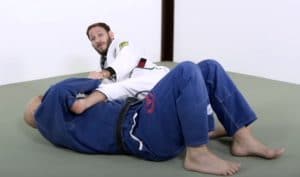
5, Keep Opponent on His Back
Your sweep will typically end with your opponent falling over onto his side or back. At this point DON’T just release everything or he’ll inevitably scramble back to a neutral position and all your work will be for nothing.
Instead maintain your grips on his sleeves (this makes it much harder for him to base on his arm) AND keep your foot on his biceps (this makes it harder for him to turn back into you) until you’re ready to proceed to step 6.
STEP 6, Climb into the Mount
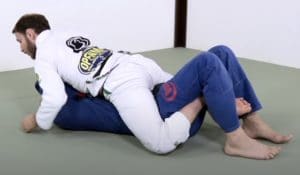
6, Climb into Mount
Maintaining both sleeve grips bring the foot that was on his biceps down to hook behind his far leg.
Then use that hooking heel to pull yourself into mount. Immediately stabilise that mount position so he can’t buck you off.
Once you’re in this super-dominan position you can start hunting for a submission to finish the fight. There are many submissions you can use from here, but the cross collar choke and/or the S mount armbar are two excellent, high percentage attacks to start with!
Go forth and sweep people from Spider Guard!Stephan Kesting
P.S. The best resource I know of to get an absolutely wicked spider guard is The Spider Guard Masterclass.
This amazing instructional is available in online streaming, DVD, and app format and covers everything from the basics of spider guard to the most advanced techniques.
You’ll also learn the drills, concepts, tweaks, gripping and guard retention strategies that really make this guard work.
Click here for more information about the Spider Guard Masterclass!
The post The First Sweep You Should Learn from Spider Guard appeared first on Grapplearts.

